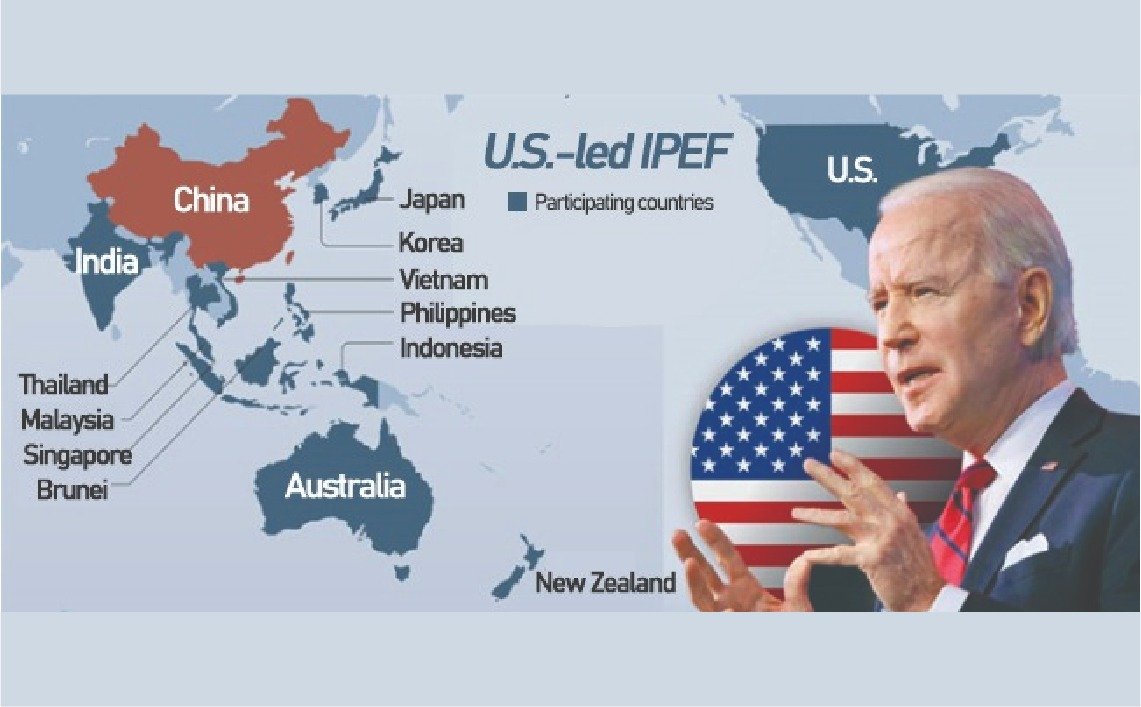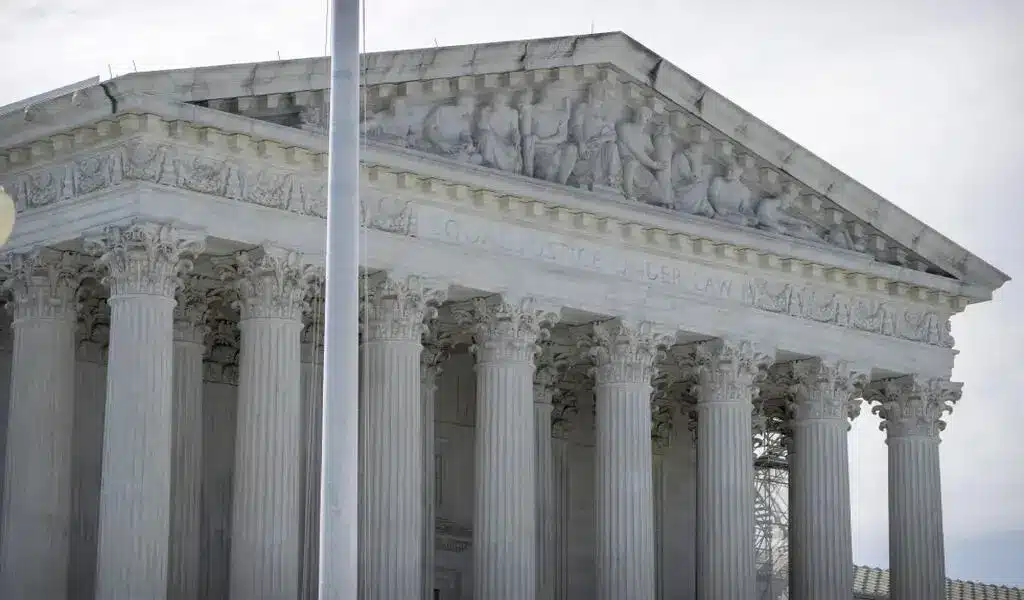News
China’s Xi Jinping Dominates the 2022 APEC Summit in Thailand

Even as host Thailand hands over the APEC baton to the United States, Chinese President Xi Jinping was very busy using the Asia-Pacific Economic Cooperation forum to highlight China’s growing clout and counter U.S. influence in the region.
Following his unprecedented third term as leader of the Chinese Communist Party at the party’s Congress last month, Xi embarked on his first major foreign tour since the pandemic struck nearly three years ago, to the Group of 20 Summit in Bali, followed by the APEC Summit in Bangkok, which concluded Saturday.
The APEC summit was Asia’s third and final gathering of world leaders in nine days. With both US President Joe Biden and Russian counterpart Vladimir Putin absent from APEC, China’s President had virtually the entire stage to himself.
During his tour, Xi generally struck a conciliatory tone in meetings with other heads of state, including the US president. The Biden-Xi meeting on the sidelines of the G20 helped to alleviate months of rising US-China tensions.
“It appears that Xi Jinping and China’s propaganda enterprise are attempting to set a softer tone and appear less overtly antagonistic during the G20 and APEC summits,” said Drew Thompson, a visiting senior research fellow at Singapore’s Lee Kuan Yew School of Public Policy.
While in Bangkok, Xi met with a number of regional leaders, including key US allies. He met with Japanese Prime Minister Fumio Kishida, Singaporean Prime Minister Lee Hsien Loong, and Philippine President Ferdinand Marcos Jr. on a variety of issues, including economic cooperation and security.
Xi also met Thai Prime Minister Prayuth Chan-o-cha, though their initial photo op went viral for the wrong reasons due to the appearance that Xi had declined Prayuth’s offer of a handshake.

“President Xi certainly wants to be a major player,” said Ja Ian Chong, a political scientist at the National University of Singapore, citing the Chinese leader’s confidence in having unscripted interactions with other leaders, such as when he chastised Canadian Prime Minister Justin Trudeau at the G20 for alleged leaks of diplomatic conversations.
“The underlying differences between China and its neighbours and trading partners remain deeply entrenched,” Thompson observed, “and there are no signs that China is adapting its foreign policy approach or how it pursues its interests.”
According to Gao Zhikai, vice president of the Beijing-based Center for China and Globalization, Xi’s presence at APEC highlighted China’s growing leadership role in stark contrast to the United States’ “diminishing relevance.”
In an effort to signal the United States’ commitment to the region, Biden attended the G-20 Summit in Bali, Indonesia, as well as the Association of Southeast Asian Nations summit in Cambodia, which Xi skipped.
However, when it came to APEC, which focuses on economic cooperation – an area of Asia policy where Washington is widely perceived to lag behind China – Biden had returned home for a family event.
“The absence of Biden at the meeting demonstrates that the United States is unconcerned about APEC,” Gao told RFA.
“Of course, the whole world is aware that his granddaughter is getting married,” said the academic who worked as a translator for Deng Xiaoping and sometimes acts as the Chinese Communist Party’s de facto media spokesman.
“However, if there was interest, the United States would know how to demonstrate it,” he added.

That is clearly not the narrative being conveyed by Washington, which now assumes the rotating chair of the 21-member APEC bloc, which was formed in 1989 to promote free trade.
In Biden’s absence, US Vice President Kamala Harris told the summit that the US is a “proud Pacific power” and that “the United States is here to stay.”
Harris met briefly with Xi, urging the Chinese leadership to “maintain open lines of communication to responsibly manage our countries’ competition.”
On the topic of economic cooperation, Harris stated that the Indo-Pacific region accounts for nearly 30% of American exports and that US companies invest $1 trillion in the region each year.
She vowed that the United States “will uphold the rules of the road” and “will contribute to the prosperity of all.”
Her words clearly struck a chord with some of the participating countries, who want to avoid being drawn into the big-power competition between China and the United States.
Nguyen Xuan Phuc, the Vietnamese president, stated that his country supports “all regional and multilateral cooperation frameworks based on international principles and regulations.”
Harris appeared to draw a comparison between the US initiative and China’s Belt and Road Initiative, which has invested large sums of money in infrastructure around the world but has critics who claim recipient countries will be heavily in debt to Beijing.
China is considering holding the third Belt and Road Forum for International Cooperation in 2023, according to Xi.
Gao claimed that Harris’ primary goal at APEC was to promote the US-led Indo-Pacific Economic Framework.

The Biden administration established the IPEF in May as the centrepiece of its regional economic strategy, and the US vice president stated that the organization now represents roughly 40% of global GDP and is “dedicated to equitable growth and high environmental and labour standards.” It excludes neither Russia nor China.
Gao believes “the US is hollowing out APEC for the benefit of IPEF,” which he calls a “artificial, ill-conceived” grouping.
“However, APEC will continue to be APEC, a natural, coherent forum of cooperation for all countries in the region,” he said.
“China has been talking up the emptiness of IPEF and also suggesting the provocative nature of the US for a while now,” said Ja Ian Chong of the National University of Singapore.
“I suppose that suggests a level of competitiveness with which Beijing regards Washington.”
Thitinan Pongsudhirak, director of Thailand’s Chulalongkorn University’s Institute of Security and International Studies, told RFA that APEC was still relevant and effective, even if only for the APEC travel card, which allows business executives to benefit from easier immigration clearance within the grouping.
“The APEC host theme of resilience, sustainability, and inclusiveness is inextricably linked to the climate agenda and post-COVID recovery.”
“It’s intended to foster collective action on climate and sustainability, as well as overcoming the pandemic,” the political analyst explained.
Source: RFA
Police Fire Rubber Bullets at 2022 Apec Summit Protesters
News
Trudeau’s Gun Grab Could Cost Taxpayers a Whopping $7 Billion

A recent report indicates that since Trudeau’s announcement of his gun buyback program four years ago, almost none of the banned firearms have been surrendered.
The federal government plans to purchase 2,063 firearm models from retailers following the enactment of Bill C-21, which amends various Acts and introduces certain consequential changes related to firearms. It was granted royal assent on December 15 of last year.
This ban immediately criminalized the actions of federally-licensed firearms owners regarding the purchase, sale, transportation, importation, exportation, or use of hundreds of thousands of rifles and shotguns that were previously legal.
The gun ban focused on what it termed ‘assault-style weapons,’ which are, in reality, traditional semi-automatic rifles and shotguns that have enjoyed popularity among hunters and sport shooters for over a century.
In May 2020, the federal government enacted an Order-in-Council that prohibited 1,500 types of “assault-style” firearms and outlined specific components of the newly banned firearms. Property owners must adhere to the law by October 2023.
Trudeau’s Buyback Hasn’t Happened
“In the announcement regarding the ban, the prime minister stated that the government would seize the prohibited firearms, assuring that their lawful owners would be ‘grandfathered’ or compensated fairly.” “That hasn’t happened,” criminologist Gary Mauser told Rebel News.
Mauser projected expenses ranging from $2.6 billion to $6.7 billion. The figure reflects the compensation costs amounting to $756 million, as outlined by the Parliamentary Budget Office (PBO).
“The projected expenses for gathering the illegal firearms are estimated to range from $1.6 billion to $7 billion.” “This range estimate increases to between $2.647 billion and $7 billion when compensation costs to owners are factored in,” Mauser stated.
Figures requested by Conservative MP Shannon Stubbs concerning firearms prohibited due to the May 1, 2020 Order In Council reveal that $72 million has been allocated to the firearm “buyback” program, yet not a single firearm has been confiscated to date.
In a recent revelation, Public Safety Canada disclosed that the federal government allocated a staggering $41,094,556, as prompted by an order paper question from Conservative Senator Don Plett last September, yet yielded no tangible outcomes.
An internal memo from late 2019 revealed that the Liberals projected their politically motivated harassment would incur a cost of $1.8 billion.
Enforcement efforts Questioned
By December 2023, estimates from TheGunBlog.ca indicate that the Liberals and RCMP had incurred or were responsible for approximately $30 million in personnel expenses related to the enforcement efforts. The union representing the police service previously stated that the effort to confiscate firearms is a “misdirected effort” aimed at ensuring public safety.
“This action diverts crucial personnel, resources, and funding from tackling the more pressing and escalating issue of criminal use of illegal firearms,” stated the National Police Federation (NPF).
The Canadian Sporting Arms & Ammunition Association (CSAAA), representing firearms retailers, has stated it will have “zero involvement” in the confiscation of these firearms. Even Canada Post held back from providing assistance due to safety concerns.
The consultant previously assessed that retailers are sitting on almost $1 billion worth of inventory that cannot be sold or returned to suppliers because of the Order-In-Council.
“Despite the ongoing confusion surrounding the ban, after four years, we ought to be able to address one crucial question.” Has the prohibition enhanced safety for Canadians? Mauser asks.
Illegally Obtained Firearms are the Problem
Statistics Canada reports a 10% increase in firearm-related violent crime between 2020 and 2022, rising from 12,614 incidents to 13,937 incidents. In that timeframe, the incidence of firearm-related violent crime increased from 33.7 incidents per 100,000 population in 2021 to 36.7 incidents the subsequent year.
“This marks the highest rate documented since the collection of comparable data began in 2009,” the criminologist explains.
Supplementary DataData indicates that firearm homicides have risen since 2020. “The issue lies not with lawfully-held firearms,” Mauser stated.
Firearms that have been banned under the Order-in-Council continue to be securely stored in the safes of their lawful owners. The individuals underwent a thorough vetting process by the RCMP and are subject to nightly monitoring to ensure there are no infractions that could pose a risk to public safety.
“The firearms involved in homicides were seldom legally owned weapons wielded by their rightful owners,” Mauser continues. The number of offenses linked to organized crime has surged from 4,810 in 2016 to a staggering 13,056 in 2020.
“If those in power … aim to diminish crime and enhance public safety, they ought to implement strategies that effectively focus on offenders and utilize our limited tax resources judiciously to reach these objectives,” he stated.
Related News:
Millennials in Canada Have Turned their Backs on Justin Trudeau
Millennials in Canada Have Turned their Backs on Justin Trudeau
News
Google’s Search Dominance Is Unwinding, But Still Accounting 48% Search Revenue

Google is so closely associated with its key product that its name is a verb that signifies “search.” However, Google’s dominance in that sector is dwindling.
According to eMarketer, Google will lose control of the US search industry for the first time in decades next year.
Google will remain the dominant search player, accounting for 48% of American search advertising revenue. And, remarkably, Google is still increasing its sales in the field, despite being the dominating player in search since the early days of the George W. Bush administration. However, Amazon is growing at a quicker rate.
Google’s Search Dominance Is Unwinding
Amazon will hold over a quarter of US search ad dollars next year, rising to 27% by 2026, while Google will fall even more, according to eMarketer.
The Wall Street Journal was first to report on the forecast.
Lest you think you’ll have to switch to Bing or Yahoo, this isn’t the end of Google or anything really near.
Google is the fourth-most valued public firm in the world. Its market worth is $2.1 trillion, trailing just Apple, Microsoft, and the AI chip darling Nvidia. It also maintains its dominance in other industries, such as display advertisements, where it dominates alongside Facebook’s parent firm Meta, and video ads on YouTube.
To put those “other” firms in context, each is worth more than Delta Air Lines’ total market value. So, yeah, Google is not going anywhere.
Nonetheless, Google faces numerous dangers to its operations, particularly from antitrust regulators.
On Monday, a federal judge in San Francisco ruled that Google must open up its Google Play Store to competitors, dealing a significant blow to the firm in its long-running battle with Fortnite creator Epic Games. Google announced that it would appeal the verdict.
In August, a federal judge ruled that Google has an illegal monopoly on search. That verdict could lead to the dissolution of the company’s search operation. Another antitrust lawsuit filed last month accuses Google of abusing its dominance in the online advertising business.
Meanwhile, European regulators have compelled Google to follow tough new standards, which have resulted in multiple $1 billion-plus fines.

Pixa Bay
Google’s Search Dominance Is Unwinding
On top of that, the marketplace is becoming more difficult on its own.
TikTok, the fastest-growing social network, is expanding into the search market. And Amazon has accomplished something few other digital titans have done to date: it has established a habit.
When you want to buy anything, you usually go to Amazon, not Google. Amazon then buys adverts to push companies’ products to the top of your search results, increasing sales and earning Amazon a greater portion of the revenue. According to eMarketer, it is expected to generate $27.8 billion in search revenue in the United States next year, trailing only Google’s $62.9 billion total.
And then there’s AI, the technology that (supposedly) will change everything.
Why search in stilted language for “kendall jenner why bad bunny breakup” or “police moving violation driver rights no stop sign” when you can just ask OpenAI’s ChatGPT, “What’s going on with Kendall Jenner and Bad Bunny?” in “I need help fighting a moving violation involving a stop sign that wasn’t visible.” Google is working on exactly this technology with its Gemini product, but its success is far from guaranteed, especially with Apple collaborating with OpenAI and other businesses rapidly joining the market.
A Google spokeswoman referred to a blog post from last week in which the company unveiled ads in its AI overviews (the AI-generated text that appears at the top of search results). It’s Google’s way of expressing its ability to profit on a changing marketplace while retaining its business, even as its consumers steadily transition to ask-and-answer AI and away from search.

Google has long used a single catchphrase to defend itself against opponents who claim it is a monopoly abusing its power: competition is only a click away. Until recently, that seemed comically obtuse. Really? We are going to switch to Bing? Or Duck Duck Go? Give me a break.
But today, it feels more like reality.
Google is in no danger of disappearing. However, every highly dominating company faces some type of reckoning over time. GE, a Dow mainstay for more than a century, was broken up last year and is now a shell of its previous dominance. Sears declared bankruptcy in 2022 and is virtually out of business. US Steel, long the foundation of American manufacturing, is attempting to sell itself to a Japanese corporation.
SOURCE | CNN
News
The Supreme Court Turns Down Biden’s Government Appeal in a Texas Emergency Abortion Matter.

(VOR News) – A ruling that prohibits emergency abortions that contravene the Supreme Court law in the state of Texas, which has one of the most stringent abortion restrictions in the country, has been upheld by the Supreme Court of the United States. The United States Supreme Court upheld this decision.
The justices did not provide any specifics regarding the underlying reasons for their decision to uphold an order from a lower court that declared hospitals cannot be legally obligated to administer abortions if doing so would violate the law in the state of Texas.
Institutions are not required to perform abortions, as stipulated in the decree. The common populace did not investigate any opposing viewpoints. The decision was made just weeks before a presidential election that brought abortion to the forefront of the political agenda.
This decision follows the 2022 Supreme Court ruling that ended abortion nationwide.
In response to a request from the administration of Vice President Joe Biden to overturn the lower court’s decision, the justices expressed their disapproval.
The government contends that hospitals are obligated to perform abortions in compliance with federal legislation when the health or life of an expectant patient is in an exceedingly precarious condition.
This is the case in regions where the procedure is prohibited. The difficulty hospitals in Texas and other states are experiencing in determining whether or not routine care could be in violation of stringent state laws that prohibit abortion has resulted in an increase in the number of complaints concerning pregnant women who are experiencing medical distress being turned away from emergency rooms.
The administration cited the Supreme Court’s ruling in a case that bore a striking resemblance to the one that was presented to it in Idaho at the beginning of the year. The justices took a limited decision in that case to allow the continuation of emergency abortions without interruption while a lawsuit was still being heard.
In contrast, Texas has been a vocal proponent of the injunction’s continued enforcement. Texas has argued that its circumstances are distinct from those of Idaho, as the state does have an exemption for situations that pose a significant hazard to the health of an expectant patient.
According to the state, the discrepancy is the result of this exemption. The state of Idaho had a provision that safeguarded a woman’s life when the issue was first broached; however, it did not include protection for her health.
Certified medical practitioners are not obligated to wait until a woman’s life is in imminent peril before they are legally permitted to perform an abortion, as determined by the state supreme court.
The state of Texas highlighted this to the Supreme Court.
Nevertheless, medical professionals have criticized the Texas statute as being perilously ambiguous, and a medical board has declined to provide a list of all the disorders that are eligible for an exception. Furthermore, the statute has been criticized for its hazardous ambiguity.
For an extended period, termination of pregnancies has been a standard procedure in medical treatment for individuals who have been experiencing significant issues. It is implemented in this manner to prevent catastrophic outcomes, such as sepsis, organ failure, and other severe scenarios.
Nevertheless, medical professionals and hospitals in Texas and other states with strict abortion laws have noted that it is uncertain whether or not these terminations could be in violation of abortion prohibitions that include the possibility of a prison sentence. This is the case in regions where abortion prohibitions are exceedingly restrictive.
Following the Supreme Court’s decision to overturn Roe v. Wade, which resulted in restrictions on the rights of women to have abortions in several Republican-ruled states, the Texas case was revisited in 2022.
As per the orders that were disclosed by the administration of Vice President Joe Biden, hospitals are still required to provide abortions in cases that are classified as dire emergency.
As stipulated in a piece of health care legislation, the majority of hospitals are obligated to provide medical assistance to patients who are experiencing medical distress. This is in accordance with the law.
The state of Texas maintained that hospitals should not be obligated to provide abortions throughout the litigation, as doing so would violate the state’s constitutional prohibition on abortions. In its January judgment, the 5th United States Circuit Court of Appeals concurred with the state and acknowledged that the administration had exceeded its authority.
SOURCE: AP
SEE ALSO:
Could Last-Minute Surprises Derail Kamala Harris’ Campaign? “Nostradamus” Explains the US Poll.
-

 News3 years ago
News3 years agoLet’s Know About Ultra High Net Worth Individual
-
Entertainment2 years ago
Mabelle Prior: The Voice of Hope, Resilience, and Diversity Inspiring Generations
-

 Health3 years ago
Health3 years agoHow Much Ivermectin Should You Take?
-

 Tech2 years ago
Tech2 years agoTop Forex Brokers of 2023: Reviews and Analysis for Successful Trading
-

 Lifestyles2 years ago
Lifestyles2 years agoAries Soulmate Signs
-

 Movies2 years ago
Movies2 years agoWhat Should I Do If Disney Plus Keeps Logging Me Out of TV?
-

 Health3 years ago
Health3 years agoCan I Buy Ivermectin Without A Prescription in the USA?
-

 Learning2 years ago
Learning2 years agoVirtual Numbers: What Are They For?


